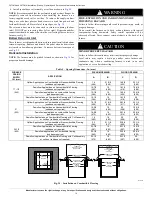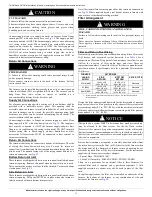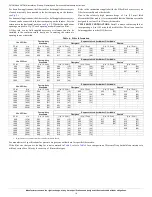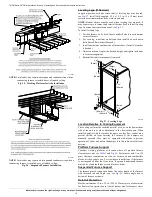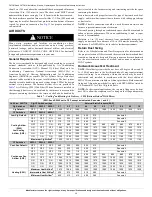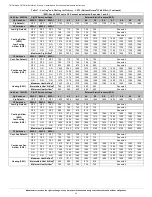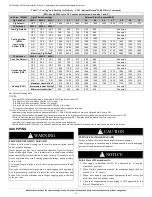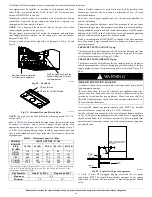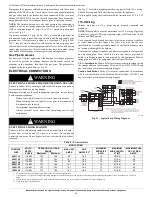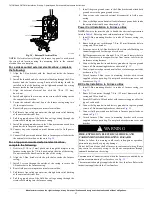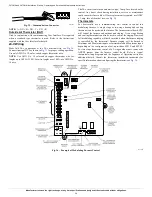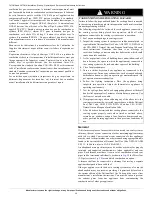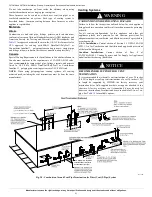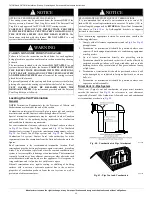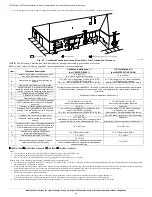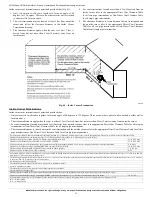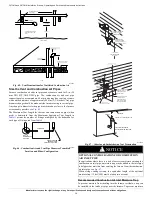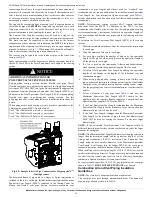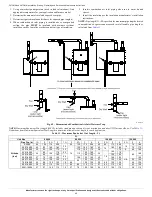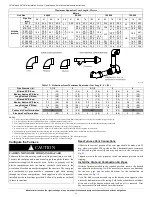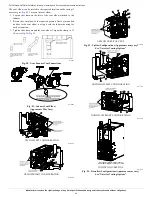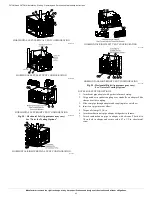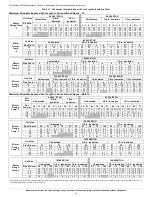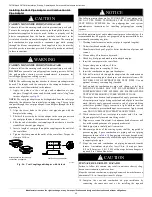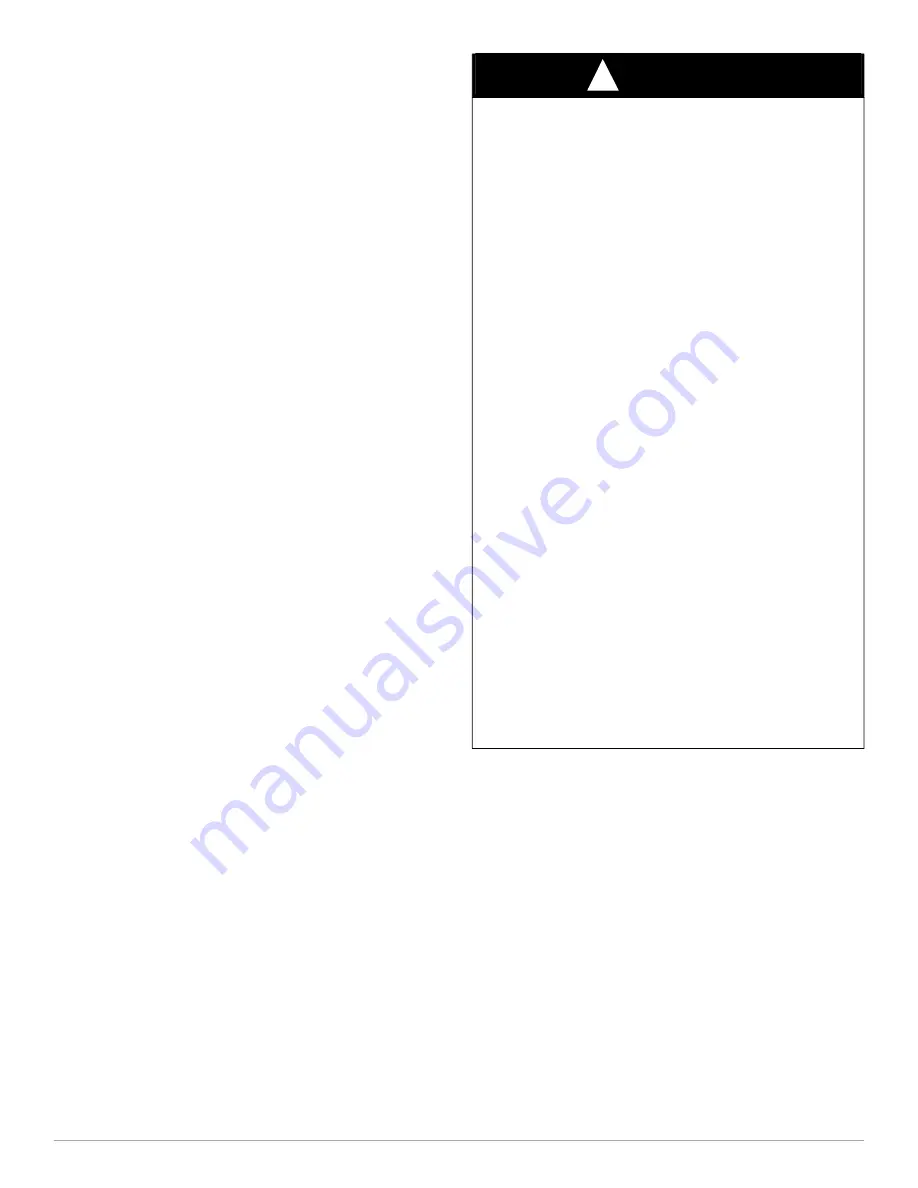
F97CMN and G97CMN: Installation, Start-up, Operating and Service and Maintenance Instructions
Manufacturer reserves the right to change, at any time, specifications and designs without notice and without obligations.
30
ventilation des gaz, ses accessoires, le terminal concentrique mural ainsi
que l’ensemble du drain de condensation extérieur fourni par le fabricant
de cette fournaise ont été certifiés ULCS 636 pour l’application des
composantes Royal Pipe, IPEX PVC qui sont certifiées à ce standard.
Au Canada, l’apprêt et le ciment doivent être du même fabricant que le
système d’évacuation. L’apprêt GVS-65 (Purple) et le ciment-solvant
GVS-65 doivent être utilisé avec les Royal Pipe. Système IPEX 636,
apprêt PVC/CPVC, Purple pour évacuation des gaz de combustion et
système IPEX 636(1)t, ciment PVC pour évacuation des gaz de
combustion, coté classe IIA, 65 deg C. doivent être utilisés avec le
système d’évacuation IPEX 636 – Ne pas combiner l ’apprêt et le ciment
d’un manufacturier avec un système d’évacuation d’un manufacturier
différent.
Bien suivre les indications du manufacturier lors de l’utilisation de
l’apprêt et du ciment et ne pas utiliser ceux-ci si la date d’expiration est
atteinte.
L’opération sécuritaire, tel que définit par ULC S636, du système de
ventilation est basé sur les instructions d’installation suivantes, ainsi que
l’usage approprié de l’apprêt et ciment. Tout arrët feu et solin de toit
utilisés avec ce système doivent être des matériaux listés UL.
L’acceptation du standard Canadien CAN/CSA B149 est directement
relié à l’installation conforme aux instructions ci- haut mentionnées. Le
standard Canadien recommande l’ inspection par un personel qualifié et
ce, une fois par année.
Les autoritées ayant juridiction (inspecteurs de gas, inspecteurs en
bâtiments, département des incendies, etc) devraient être consultées
avant l’installation afin de déterminer si un permis est requis.
General
If this furnace replaces a furnace that was connected to a vent system or
chimney, the vent or vent connectors of other remaining appliances may
need to be re-sized. Vent systems or vent connectors of other appliances
must be sized to the minimum size as determined using appropriate table
found in the current edition of National Fuel Gas Code NFPA 54/ANSI
Z-223.1. In Canada, refer to CAN/CSA-B149.1.
An abandoned masonry chimney may be used as a raceway for properly
insulated and supported combustion-air (when applicable) and vent
pipes. Each furnace must have its own set of combustion-air and vent
pipes and be terminated individually, as shown in
for Direct Vent
(2-Pipe) system or
for ventilated combustion air option.
A furnace shall not be connected to a chimney flue serving a separate
appliance designed to burn solid fuel.
Other gas appliances with their own venting system may also use the
abandoned chimney as a raceway providing it is permitted by local code,
the current edition of the National Fuel Gas Code and the vent or liner
manufacturer’s installation instructions. Care must be taken to prevent
the exhaust gases from one appliance from contaminating the
combustion air of other gas appliances.
WARNING
!
CARBON MONOXIDE POISONING HAZARD
Failure to follow the steps outlined below for each appliance connected
to the venting system being placed into operation could result in carbon
monoxide poisoning or death.
The following steps shall be followed for each appliance connected to
the venting system being placed into operation, while all other
appliances connected to the venting system are not in operation:
1. Seal any unused openings in venting system.
2. Inspect the venting system for proper size and horizontal pitch, as
required in the National Fuel Gas Code, ANSI Z223.1/NFPA 54 or
the CSA B149.1 Natural Gas and Propane Installation Code and
these instructions. Determine that there is no blockage or
restriction, leakage, corrosion and other deficiencies, which could
cause an unsafe condition.
3. As far as practical, close all building doors and windows and all
doors between the space in which the appliance(s) connected to
the venting system are located and other spaces of the building.
4. Close fireplace dampers.
5. Turn on clothes dryers and any appliance not connected to the
venting system. Turn on any exhaust fans, such as range hoods and
bathroom exhausts, so they are operating at maximum speed. Do
not operate a summer exhaust fan.
6. Follow the lighting instructions. Place the appliance being
inspected into operation. Adjust the thermostat so appliance is
operating continuously.
7. Test for spillage from draft hood equipped appliances at the draft
hood relief opening after 5 minutes of main burner operation. Use
the flame of a match or candle.
8. If improper venting is observed during any of the above tests, the
venting system must be corrected in accordance with the National
Fuel Gas Code, ANSI Z223.1/NFPA 54 and/or CSA B149.1
Natural Gas and Propane Installation Code.
9. After it has been determined that each appliance connected to the
venting system properly vents when tested as outlined above,
return doors, windows, exhaust fans, fireplace dampers and any
other gas-fired burning appliance to their previous conditions of
use.

